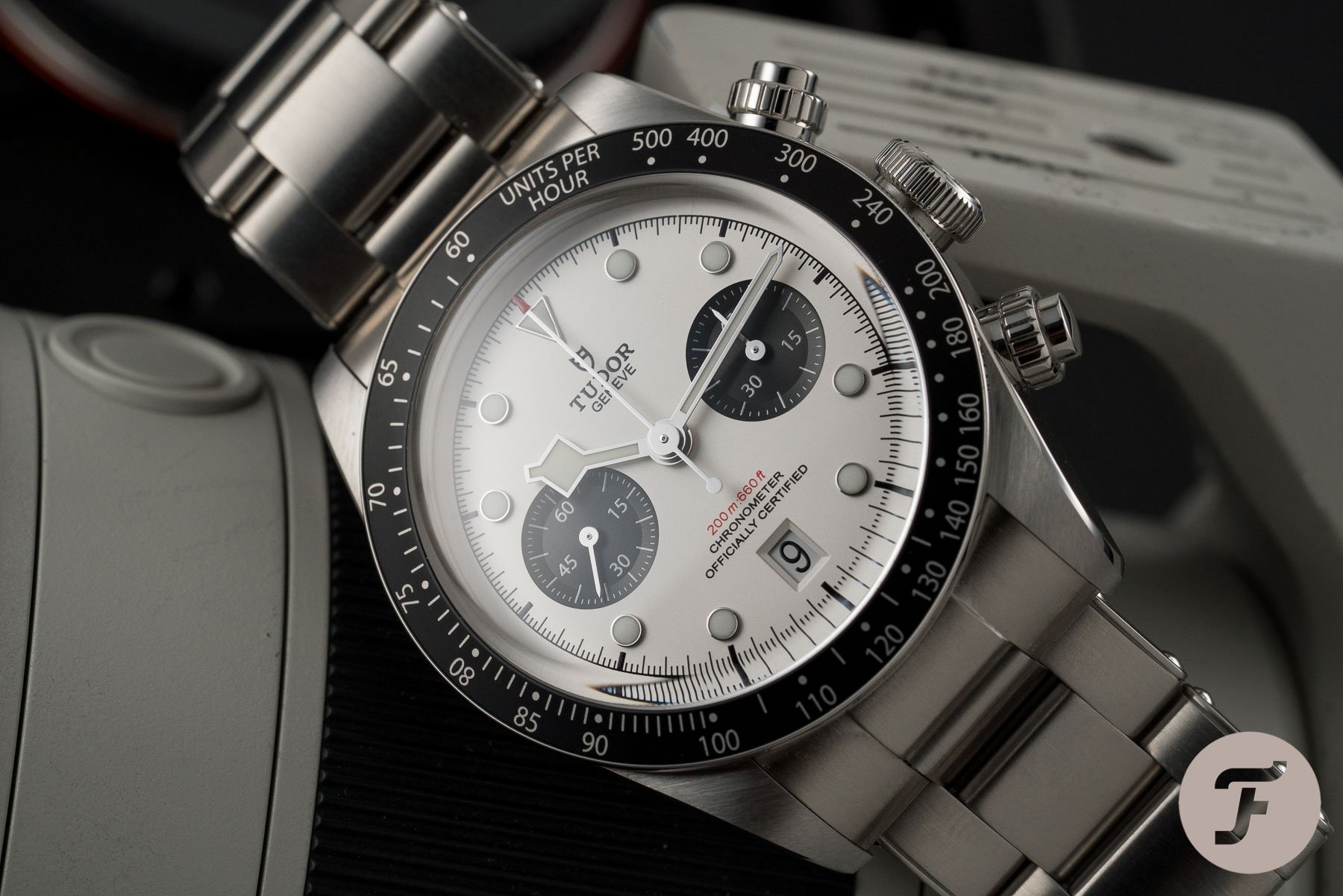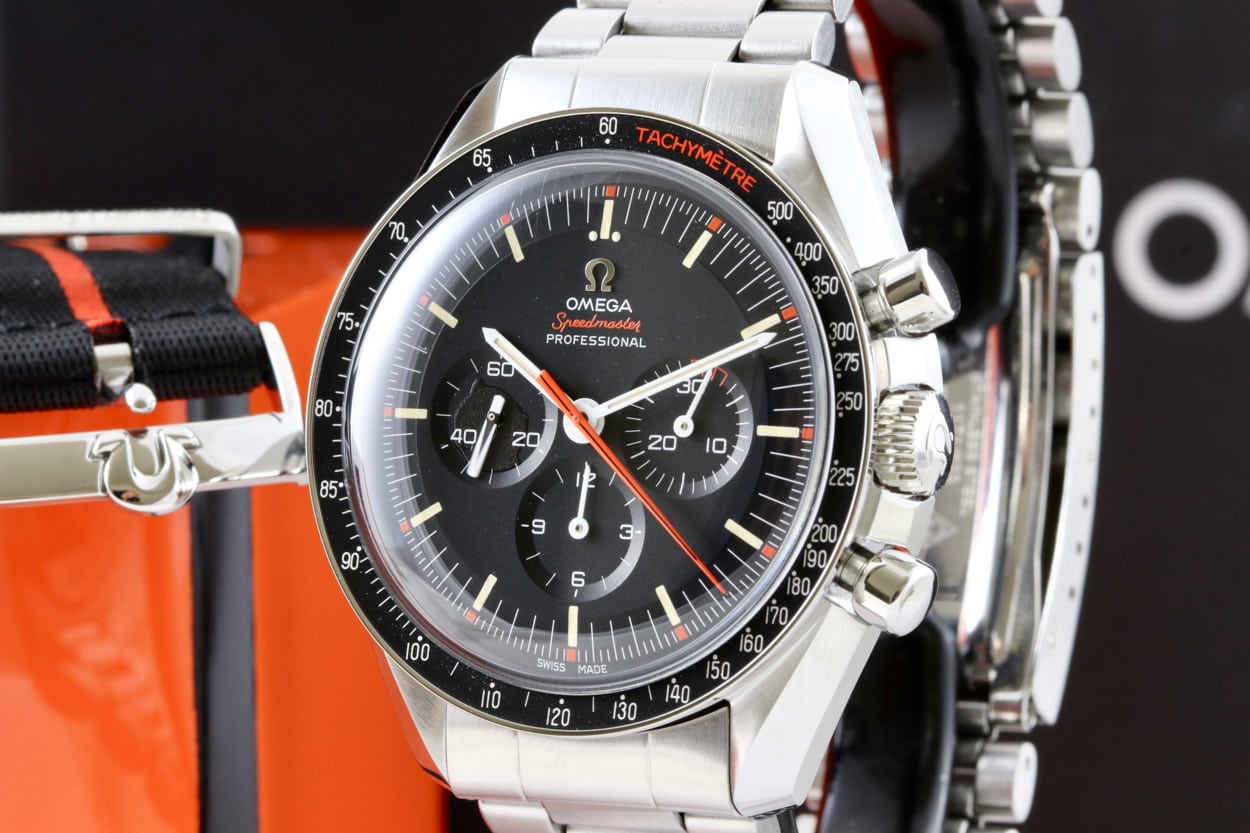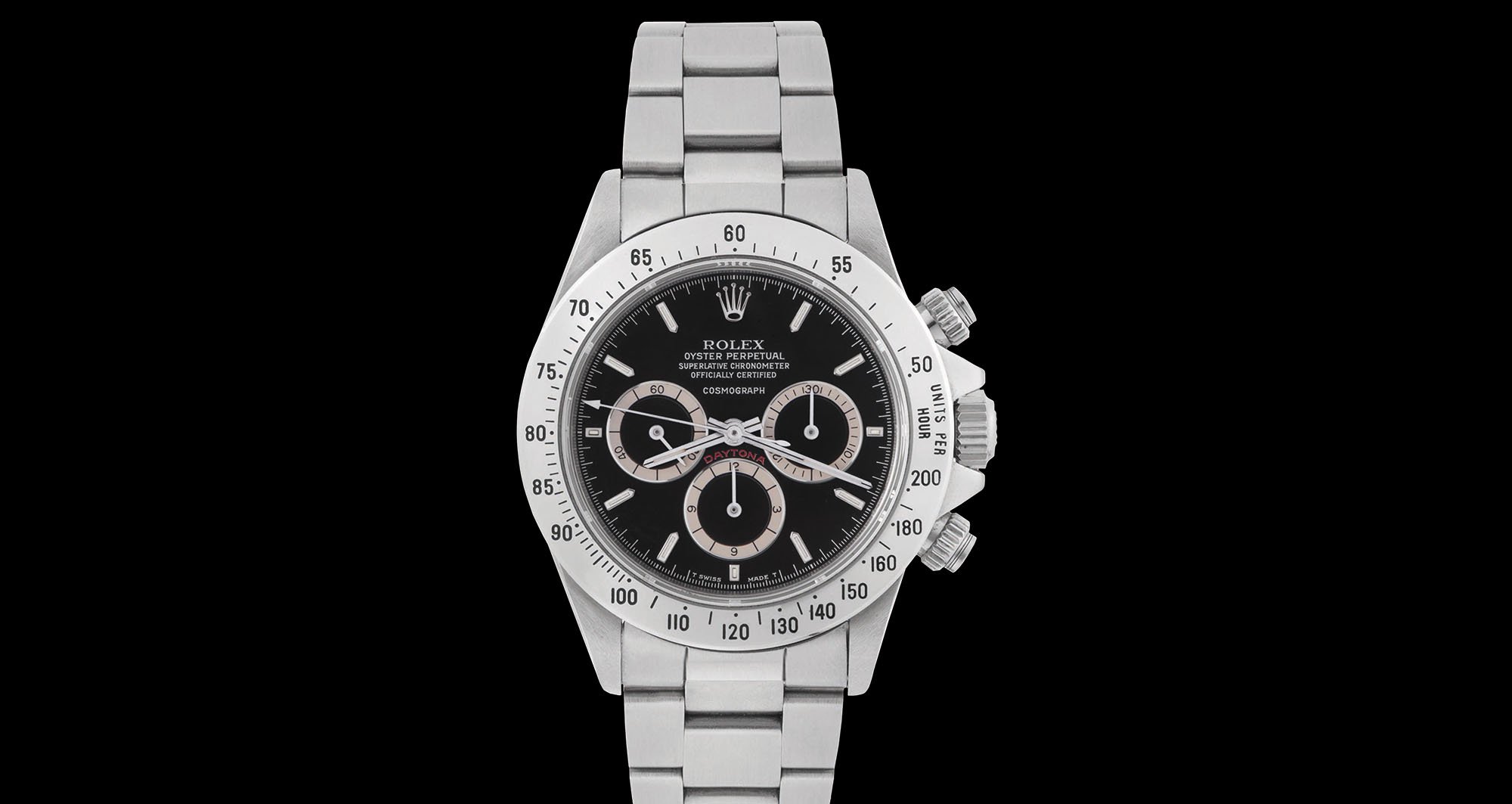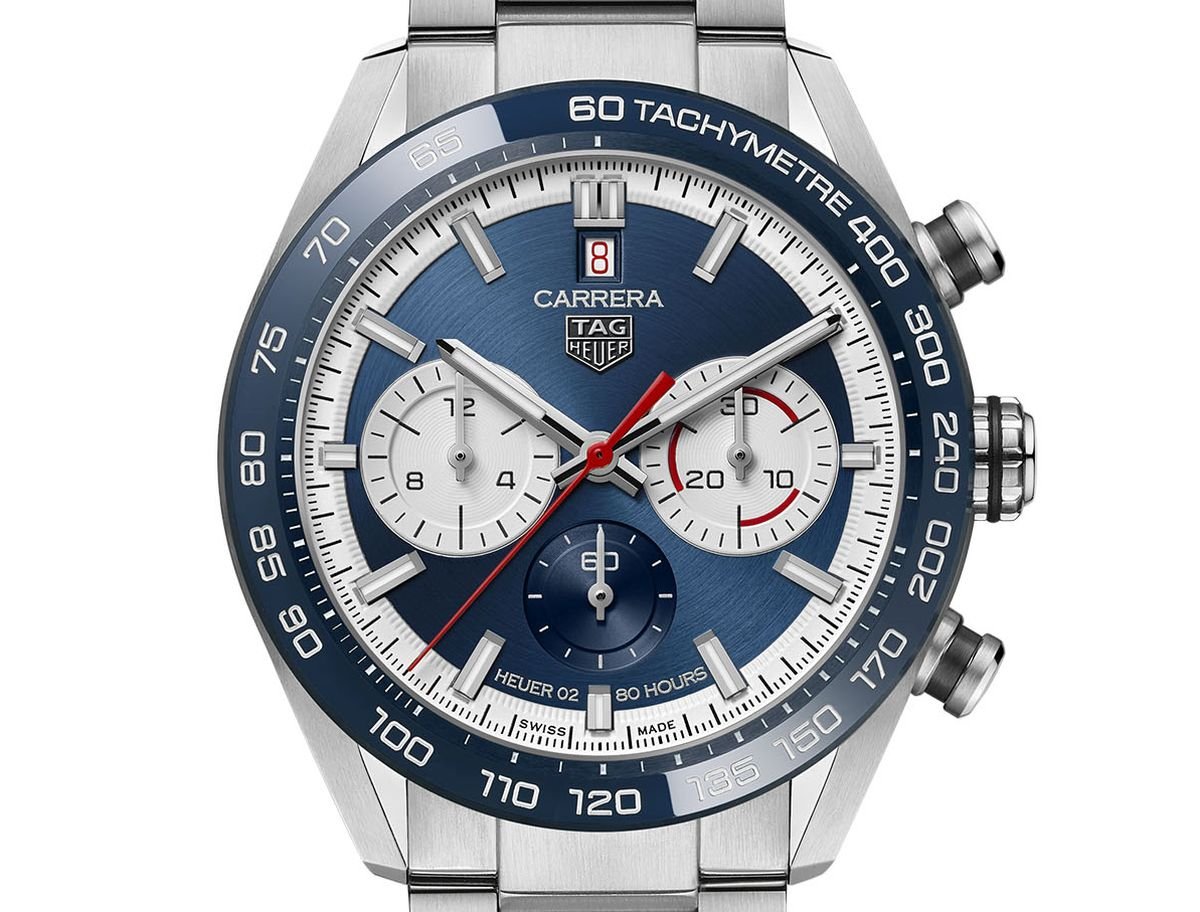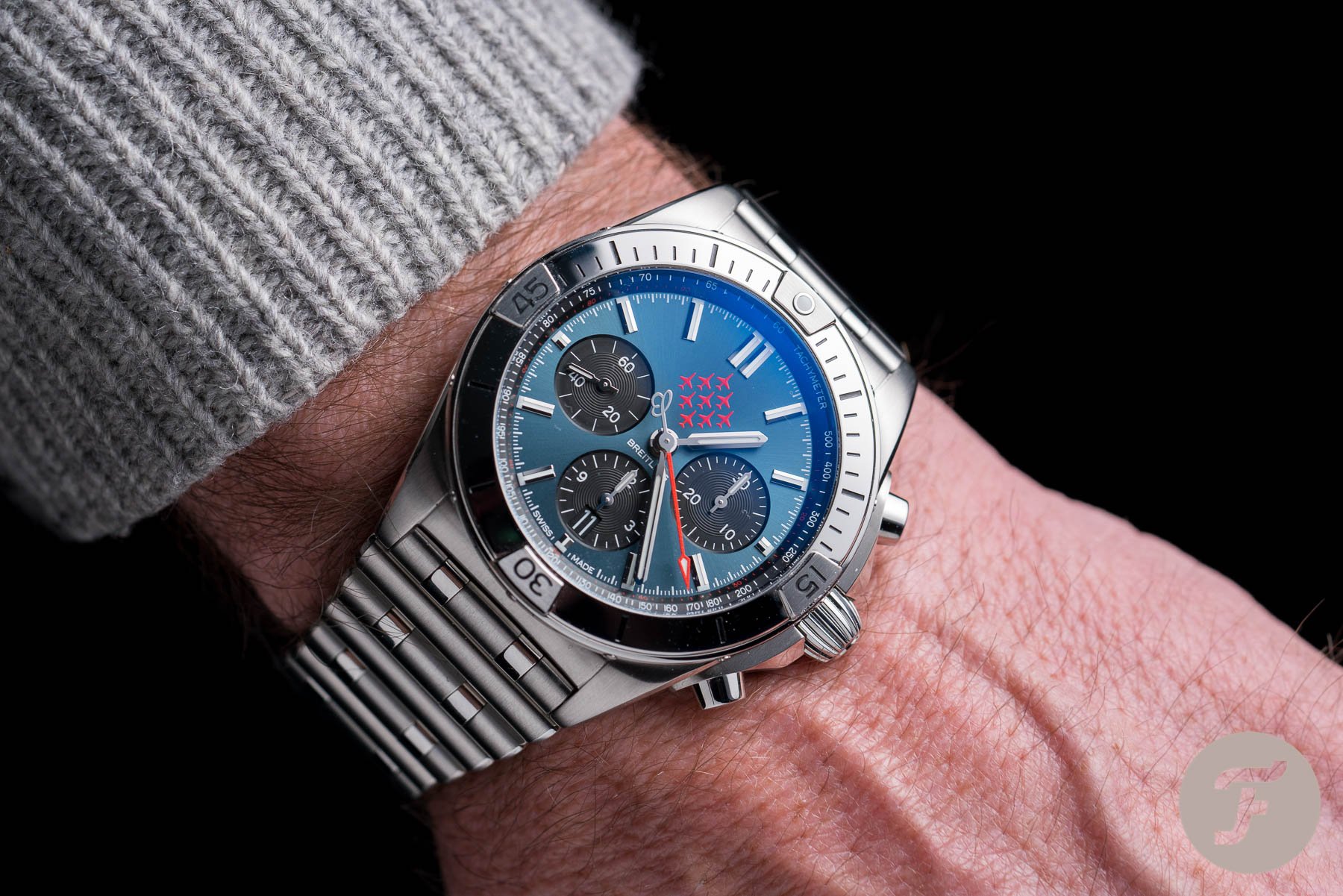How Watches Work: Our Definitive Guide To Chronograph Scales
How many chronograph nuts do we have in the house tonight? Judging by our loyal following of Speedmaster fans, I’d venture to guess quite a few. But whether you love you some sub-dials or just prefer a nice three-hander, we all know what a chronograph’s main job is: to record elapsed times.
When you think about it, this fairly obvious function that unites all chronographs is nevertheless rather remarkable in the swath of its utility. Need to time something? Anything? It’s got you covered. 100m sprinter Jesse Owens’s 10.3-second Olympic victory in 1936? Check. A life-saving 14-second fuel burn during the Apollo 13 mission in 1970? Double check. My 6th-grade science teacher’s record-setting trip to the “bathroom” during detention in 2001? TRIPLE CHECK.
Beloved both for their utility and aesthetic, chronographs have become some of the most popular watches in history. But what about those tag-along scales we often see hanging about the sub-dials? How many of us know not only what they are, but how to use them? If, like me, you had ever wondered how to use the ubiquitous tachymeter, or what an asthmometer even is, you’ve come to the right place. Today, we’ll lay it all out, in this (hopefully) definitive guide to chronograph scales. Let’s jump in, starting with the most common, and perhaps most versatile of all, the tachymeter.
What is a tachymeter?
The tachymeter is a scale most commonly used for measuring speed over a fixed distance. It was invented by M. Gaetano Caïro in 1836, with its name derived from the Greek words takhús and métron – “swift” and “measure.” In 1905, Léon Breitling patented a simplified tachymeter design, and used it in his Vitesse timer. Shortly thereafter, the police used the Vitesse to issue the very first speeding tickets in Switzerland. It’s no wonder, then, that the tachymeter is so commonly used on racing or automotive-themed timepieces.
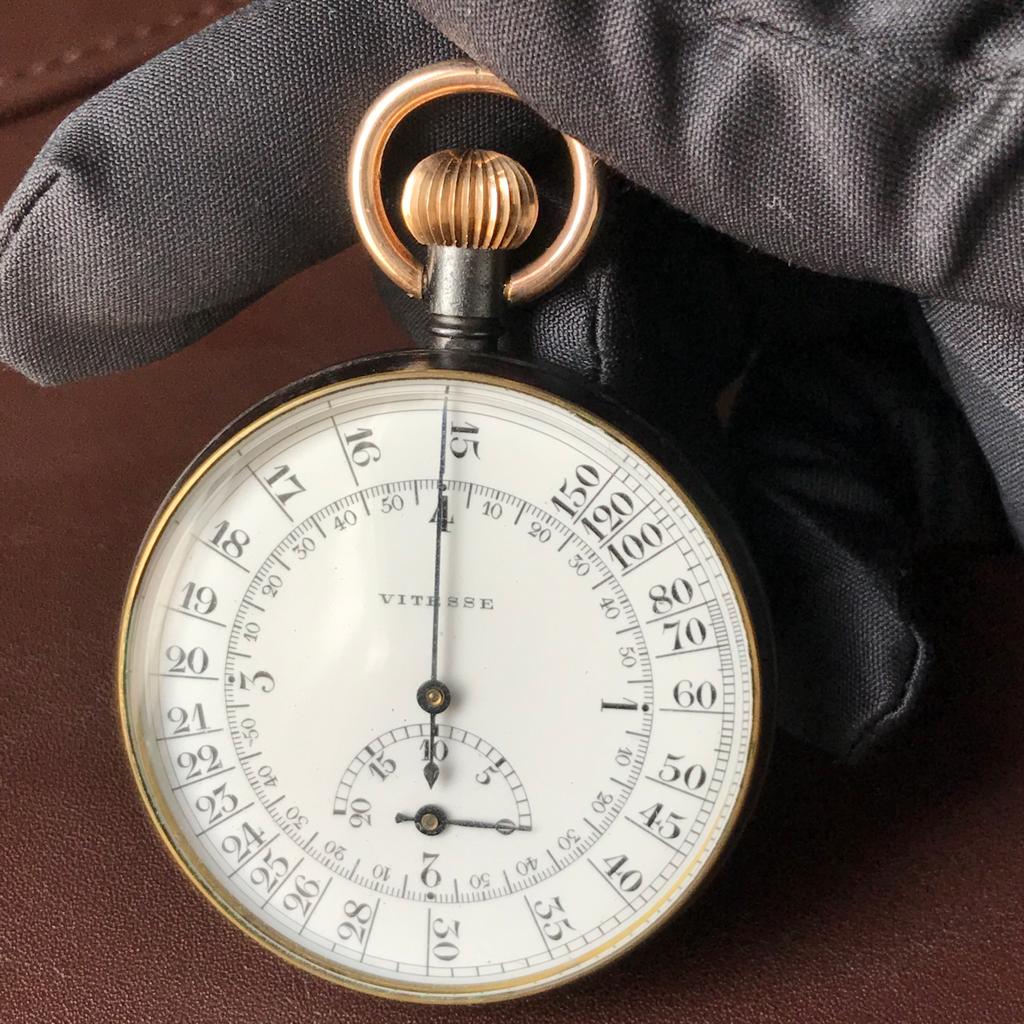
Breitling Vitesse pocket watch from 1910, one of the first watches with a tachymeter. Image credit: Alarafpocketwatch.com
A tachymeter can be used to measure speed with any unit of distance, as long as the units you want to calculate and the units you measure remain consistent. In other words, to calculate speed in kilometers per hour, you must measure in kilometers. To calculate miles per hour, you must measure in miles.
For the math geeks out there, the scale is based on the algebraic equation T=3600÷t. In this equation, T equals the value shown on the tachymeter scale, the total units you wish to measure. 3600 equals the number of seconds in one hour, and t equals elapsed seconds. Most tachymeters today can perform this calculation based on 7-60 seconds of elapsed time.
How to use it
The most frequently used examples often involve a car on a race track. For the sake of simplicity, we’ll start there as well. Let’s say you’re a racing fan, and you want to know your favorite driver’s average speed in miles per hour. You know that the distance between the starting line and turn 2 on the race track is exactly one mile. Thanks to the tachymeter on your trusty Omega Speedmaster Speedy Tuesday Ultraman, you can find that out. As the driver zooms past the starting line to start his second lap, you immediately start your chronograph. When he reaches turn 2, you stop it. Checking the elapsed time, you see that 22.5 seconds have passed. By aligning the chronograph seconds hand with the tachymeter, you see that it reads 160. The driver’s average speed over that mile, therefore, was 160 miles per hour.
For the mathematically inclined, let’s recall the tachymeter equation, T=3600÷t:
-
T is the value indicated by the tachymeter, or the total units you wanted to measure. In this case, T = 160 miles per hour.
-
3600 is the number of seconds per hour.
-
t is the elapsed seconds. In this case, t = 22.5 elapsed seconds.
And for those of us who struggled with math (this guy), if we flip the equation around to simple division, indeed we find that 3600 seconds per hour ÷ 22.5 seconds of elapsed time = 160 miles per hour.
Not just for fast cars
Imagine your daughter is a high school track runner. It’s the day of the regional championships, and she is next up in the 400-meter dash. Out of curiosity, you want to know your pride-and-joy’s average speed during her dash. As she and the other runners take their positions, you place your finger on the start pusher of your Rolex Daytona 16520. When the gun goes off, you engage it.
As she crosses the finish line in first place, you immediately stop the chronograph. You see that she has just ran a personal best of 47 seconds. Checking the tachymeter scale, you see that it indicates 77. “Wow!” you think to yourself. “She just ran 77 kilometers per hour?!”
Not so fast there, buddy
Remember, you want to know your daughter’s running speed in kilometers per hour. But she didn’t run a kilometer; she only ran 400 meters. So, to keep units consistent, just remember that 400 meters is equivalent to 0.4 kilometers. To calculate her speed, simply multiply the tachymeter value by 0.4.
-
T= 77 × 0.4
-
T= 30.8 kilometers per hour
Congratulations, your child is a speed demon!
Additional functions
A tachymeter can also work in reverse. If you already know your constant speed, you can also calculate distance. Using that data, you could also calculate your arrival time.
Let’s say you know that you’re moving at a constant speed of 97 kilometers per hour. Your odometer, however, is broken, and you need to measure how far you’re traveling. So, you start engage the chronograph on your TAG Heuer Carrera Sport. When the seconds hand has reached 97 on the tachymeter, you stop the chronograph. You see that 37 seconds have elapsed. That means, in 37 seconds, you have traveled one kilometer.
If you keep a constant speed of 97 kilometers per hour, you can use this 37 sec per kilometer calculation to estimate an arrival time. Simply multiply 37 by the remaining distance in kilometers. If you know that your destination is roughly 10 kilometers away, you can deduce that you will arrive there in roughly 370 seconds (6 minutes and 10 seconds).
Acknowledging limitations
This is all well and good on paper, but let’s honest; cars rarely ever move at a totally constant speed. Even if they did, they could not stop instantly. In addition, these calculations do not account for deceleration or other outside factors, such as wind or a**hole drivers. So, in the end, it’s probably best to use these data as estimations, rather than hard, scientific facts.
But it doesn’t stop there!
Just when you thought the tachymeter had exhausted its utility, think again! You can also use it to measure the hourly frequency at which something performs tasks. Humans are, well, human, and often can’t maintain a constant working speed. But machines usually can!
Let’s say, for example, that you’ve started a small meat-packing company. Being the industrious guy that you are, just to get you started, you have built a machine that cuts and shrink-wraps steaks. Now you want to know how efficient this machine is. With a tachymeter, you can easily measure the hourly rate at which your homemade machine performs its task.
Using your Breitling Chronomat B01 42 Red Arrows, you time how long it takes your machine to cut and wrap a steak. Your chronograph reads 21 seconds. Following the tip of the chronograph seconds hand to the tachymeter scale, you see that it indicates a value of about 170. Therefore, assuming your machine does not malfunction, it will be able to cut and shrink wrap 170 steaks per hour. Not the fastest machine ever built, but hey, it beats doing it by hand, right?
Still with me?
Whew, that was a lot to digest, wasn’t it? But if your head is spinning now, never fear! Next, we’ll take a look at the rarer, and thankfully, simpler scales. While a bit more limited in their usage, they still offer a range of neat functions that we all could use if we just knew how. Taking a step back in the math department, let’s check out the next one.
The telemeter
Like the tachymeter, the telemeter’s name also derives from ancient Greek, têle and métron – “far away” and measure.” Using a watch with a telemeter, the wearer can determine his or her distance from a visible and audible event. Unlike a tachymeter, a telemeter scale is not universal for all units. Watches calibrated for kilometers use one scale, and those calibrated for miles use another. Regardless, a 60-second telemeter scale bases its calculations on the approximate speed of sound, divided by 60 minutes, as seen below:
-
1200 kilometers per hour ÷ 60 minutes = 20 kilometers/minute
-
750 miles per hour ÷ 60 minutes = 12.5 miles/minute
Thankfully, regardless of units, the way in which you use a telemeter is exactly the same.
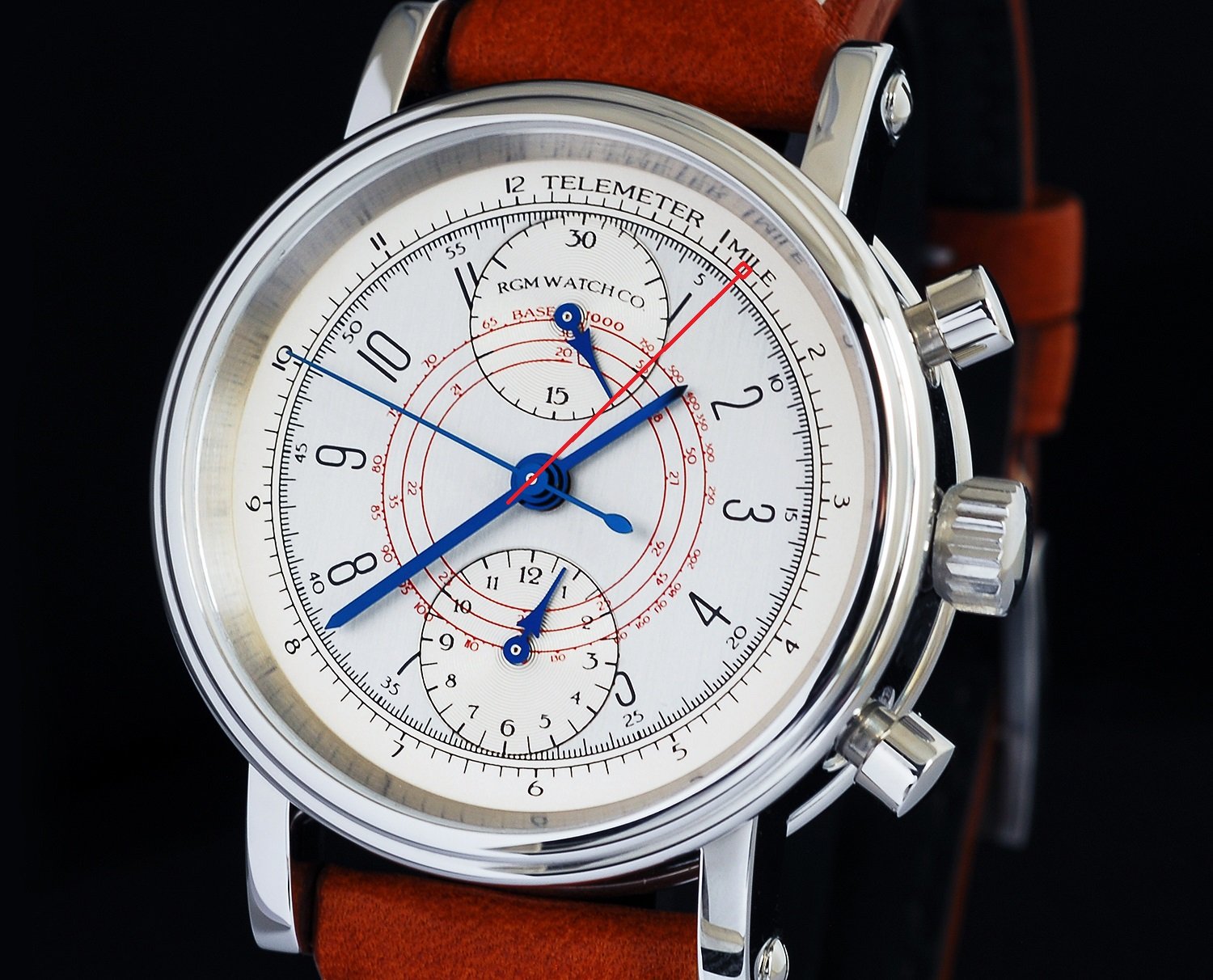
RGM 455-R with red pointer (author’s edit) measuring six elapsed seconds and 1.25 miles on the telemeter
How to use it
Let’s say I, as an American ex-pat, am visiting home for the summer. Upon noticing Independence Day fireworks from my mother’s kitchen window on the 4th of July, I want to know how many miles away they are. With an American telemeter, such as the RGM 455-R Classic, it’s an easy task. The next time I see a flash, I start my chronograph. When I hear the crackle, I stop it immediately. It shows an elapsed time of six seconds. According to my telemeter scale, that means the fireworks are 1.25 miles away.
Alternatively, let’s say evil space aliens on the moon have escaped imprisonment after 10,000 years. Cackling, their leader proclaims “It’s time to conquer Earth!” She proceeds to send a giant monster to wreak havoc upon Dresden, and in a panic, our managing editor Rob needs to know how far away impending doom lies. Upon witnessing the space-laser-induced mushroom cloud, Rob starts the chronograph on his Echo/Neutra 1956 Cortina. Upon hearing the boom, he stops the chronograph, seeing that twelve seconds have elapsed. According to his telemeter scale, the evil space monster is four kilometers away. Lauf weg, Rob! Lauf weg!
The pulsometer
The pulsometer, alternatively called a pulsograph, is one of the more straightforward scales. It is used for measuring exactly what the sound of the name implies: a person’s pulse. These days, a pulsometer scale is usually graduated for 30 pulsations. Scales calibrated for 10 or 15, however, also exist. The pulsometer was popular with doctors in the early and mid-20th century for measuring their patients’ heart rates.
How to use it
To use a pulsometer, one would simply need to place two fingers of his or her watch-wearing hand on the patient’s wrist, start the chronograph, count the proper number of heartbeats, and stop the chronograph. To determine a patient’s pulse in beats per minute, simply read the corresponding number from the pulsometer scale.
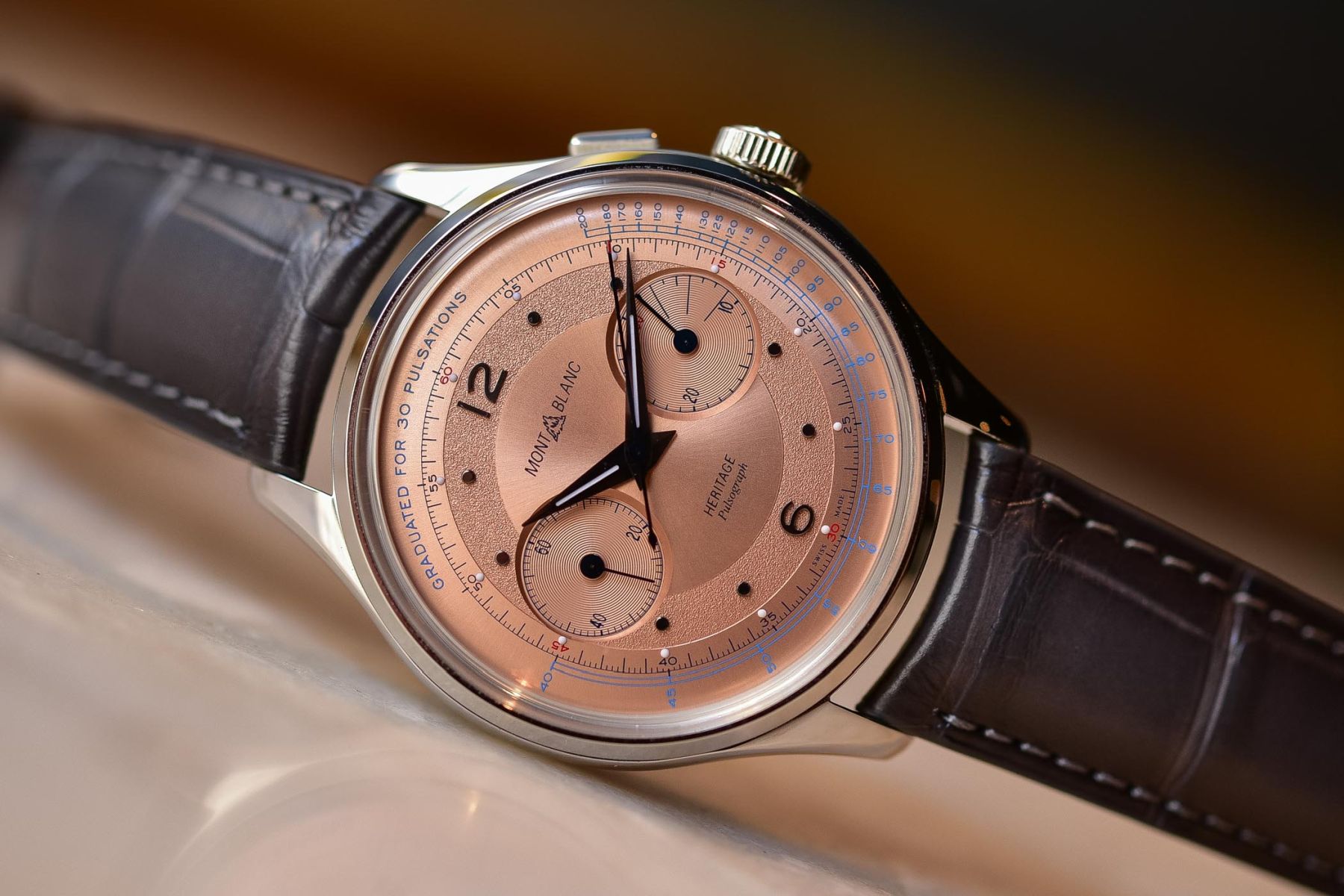
Montblanc Heritage Pulsograph, measuring 10 elapsed seconds and 180 on the pulsometer. Image credit: Monochrome-watches.com
For example, an elderly woman is feeling short of breath, despite having done no strenuous physical activity. Having located the woman’s pulse, her doctor engages the start pusher on his Montblanc Heritage Pulsograph and counts 30 beats before stopping the chronograph. He reads that 10 seconds have elapsed, equating to 180 beats per minute on the pulsometer scale. The doctor confirms that this is indeed outside the average range of 60-100 beats per minute, and is now able to take appropriate action.
Last but not least, the asthmometer
Unless you’re in the medical profession, you may not have even heard of an asthmometer. To be completely honest, before I began researching for this article, neither had I. And there’s probably good reason for that. In today’s world, where many analog medical machines have gone the way of the dodo, you’d be very hard-pressed to find an asthmometer on a modern watch. Indeed, a Google image search for “asthmometer watch” is likely to flood your screen with shots of just one Longines model, the Asthmometer-Pulsometer Chronograph from 2013. But we’re here today to learn new things, so what exactly is it?
The word asthmometer – pronounced “az-MO-me-ter” – comes from the original Greek word asthma, meaning “short of breath.” This word has made its way into English with no change at all, so that should give you a good idea of what an asthmometer is used for. Any guesses?
The asthmometer is a scale used for measuring breath, and more specifically, the per-minute respiratory rate of a patient. Unlike the pulsometer, this is definitely a more profession-specific application. While the layman may be interested in checking his pulse with a pulsometer, very rarely does he care exactly how many breaths per minute he is taking. Nevertheless, let’s see how it works.
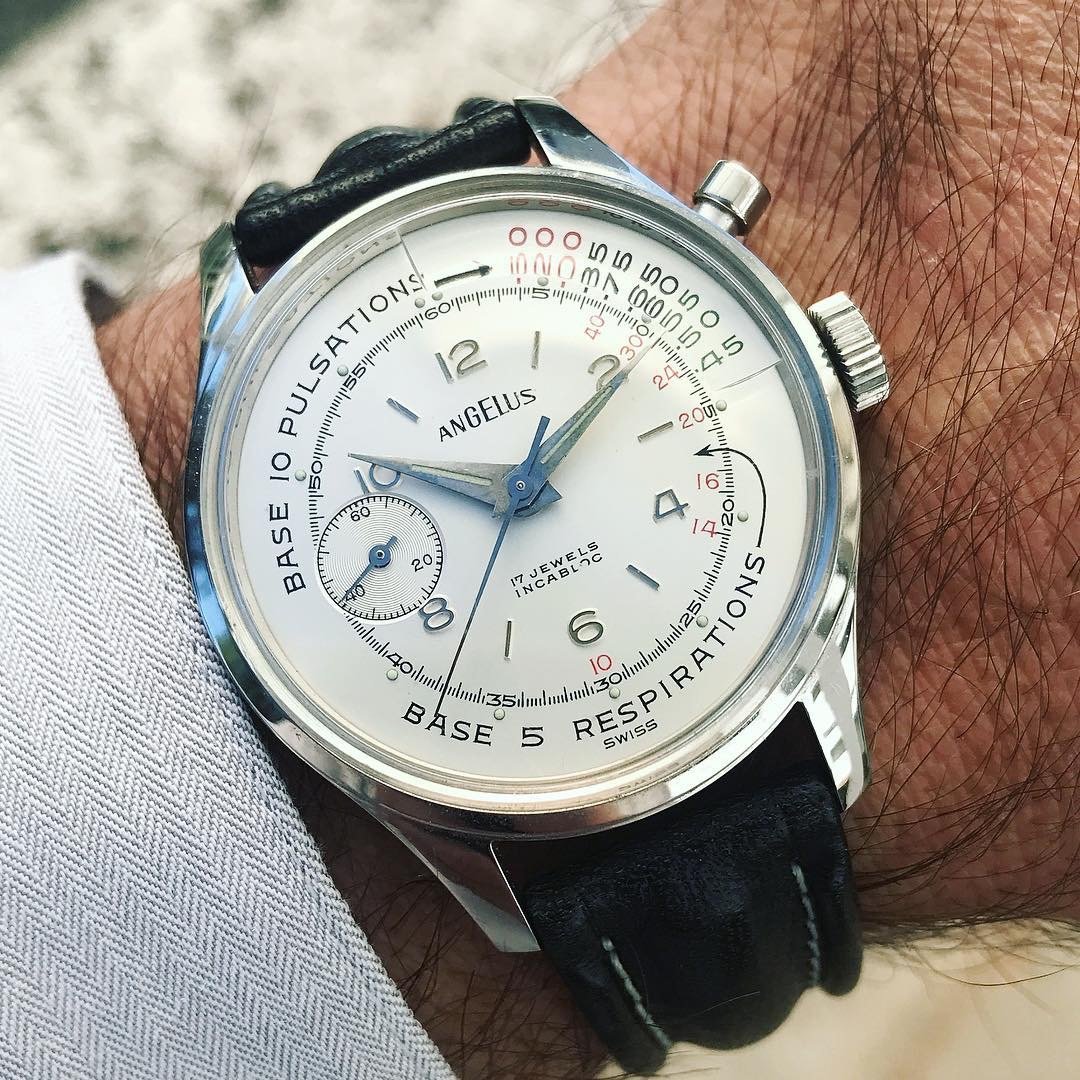
Angelus Medical measuring almost 38 elapsed seconds and under 10 breaths per minute on the asthmometer
Using an asthmometer
Asthmometer scales are usually graduated for five respirations – that is, five cycles of both inhalation and exhalation. Medical professionals usually measure this visually by checking how many times a patient’s chest rises and falls. To use an asthmometer, therefore, is quite straightforward. A doctor wearing the vintage Angelus Medical could simply start the chronograph, observe the patient’s chest, and stop the chronograph upon counting five breaths. By aligning the chronograph seconds hand with the red inner scale, the doctor will know the patient’s respiratory rate.
The average respiratory rate of an adult at rest is 12-16 breaths per minute. As you can see from the Angelus above, it took the hypothetical patient nearly 38 seconds to breathe in and out five times. This has surpassed the limits of the scale, measuring under 10 breaths per minute. Thus, unless this patient is quite physically fit or just breathes rather deeply, he or she could be in trouble.
Medical professionals can use a patient’s respiratory rate in several ways. For example, it has been found that a patient with a high respiratory rate of over 27 breaths per minute has a statistically higher chance of experiencing cardiac arrest within 72 hours. That said, these days, an asthmometer may not be the most practical scale for us laymen. Nevertheless, it’s quite interesting to think about how many lives the “doctors’ watches” of the past could have helped to save.
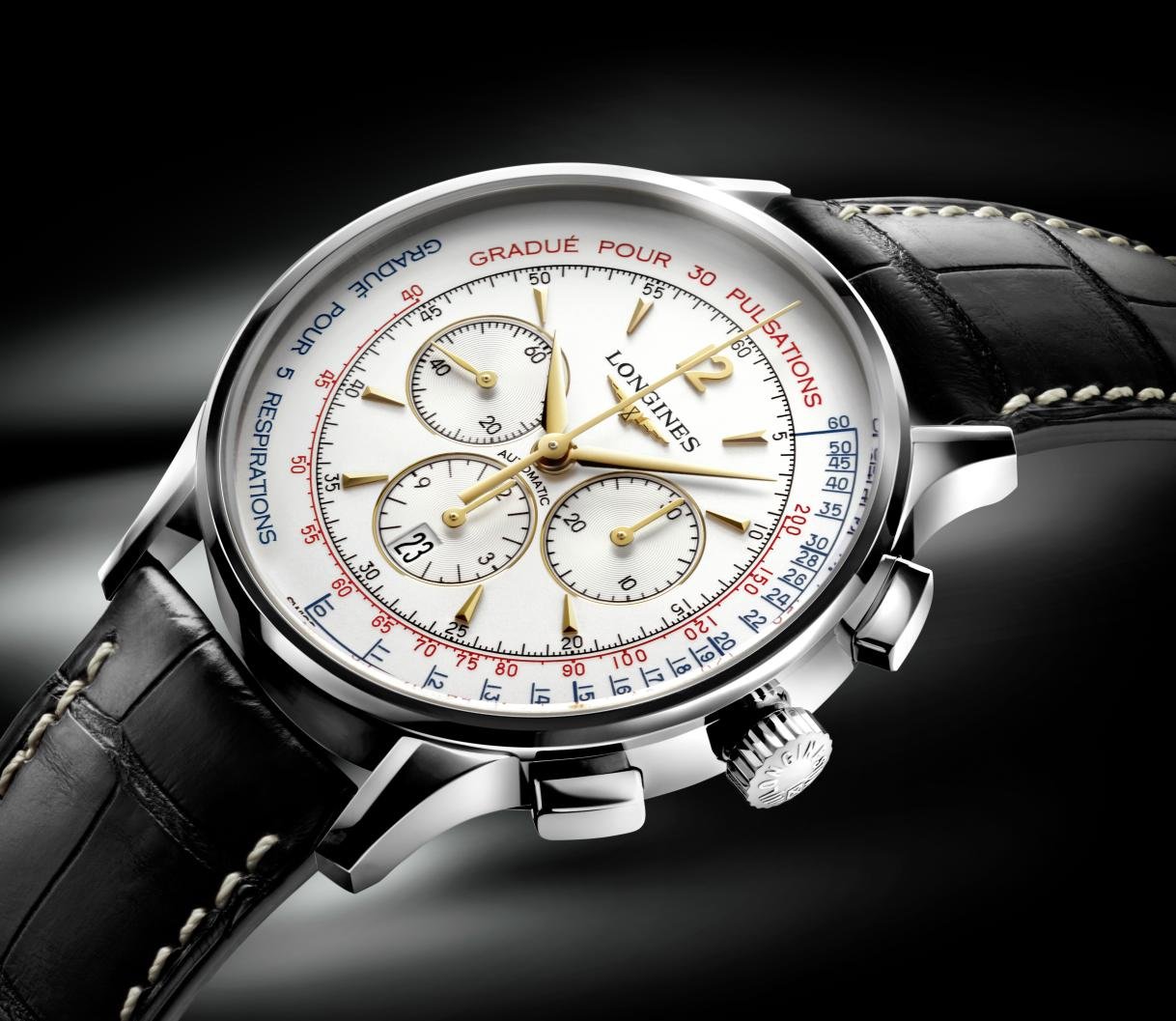
Longines Asthmometer-Pulsometer Chronograph, one of the very few modern watches to feature an asthmometer scale
That’s all, folks!
And thus ends the Fratello guide to chronograph scales. We hope you’ve learned something interesting today. Even if you don’t end up using your chronograph scales more often, at least you can now impress all of your family, friends, and colleagues with even more geeky watch trivia than last time!
Before the sarcasm intensifies any more, I’ll throw it over to you! Which one of the chronograph scales did you find most interesting? Do you actually use your chronograph scales? If so, which is your favorite? Let us know in the comments below! Having learned so much about these scales during the research process, I’ll be writing up my top five of each style soon, so make sure to check back in and vote for your favorite. As always, thanks for reading, and we’ll catch you back here real soon for another installment of “How Watches Work.”

